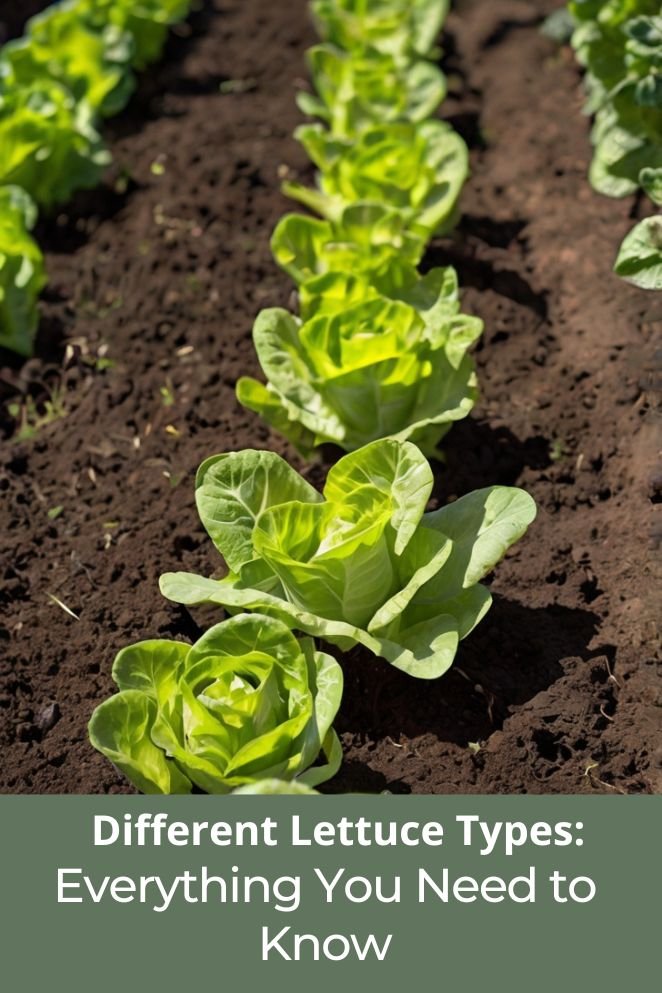
Lettuce is a staple in diets worldwide, celebrated for its light, crisp texture and mild flavor.
But did you know there are many different types of lettuce, each with its unique taste, texture, and nutritional benefits?
From the crunchy iceberg to the tender butterhead, each variety has something special to offer.
Knowing these differences can help you select the best lettuce for your meals and gardening needs.
Beyond salads, lettuce is incredibly versatile in the kitchen. It adds texture and freshness to wraps, lettuce cups, and soups.
You can blend it into smoothies for added nutrition, incorporate it into slaws, or use it as a refreshing garnish for sandwiches and burgers.
Additionally, sautéing lettuce makes for a delightful side dish, showcasing its versatility and culinary appeal.
Different Types of Lettuce
Arugula
Arugula is a leafy green that has gained popularity for its distinctive, peppery flavor and nutritional benefits.
While it is often classified with lettuces, arugula is technically a member of the brassicaceae family, which includes mustard greens and kale.
It is often referred to by various names such as rocket, italian cress, mediterranean rocket, rugola, rugula, roquette, and rucola.
This versatile green is identified by its small, scalloped, dark green leaves, resembling oakleaf lettuce with their rounded edges and undulating shape.
Arugula’s flavor profile is bold and peppery, providing a spicy kick to various dishes.
The taste varies with the age of the leaves; young arugula tends to be milder, while mature leaves deliver a more intense flavor.
- Read also: Caring Your Lettuce: How to Prevent Bolting in Lettuce Plants
- Read also: Growing Green: A Guide to Natural Pesticides for Lettuce
Frisee
Frisee, also known as curly endive, is a distinctive lettuce variety with a unique appearance and flavor.
Its tightly curled, feathery leaves have a bright green color that fades to a creamy yellow towards the center.
This striking contrast makes it a visually appealing addition to any salad.
While frisee is often categorized as a lettuce, it’s actually a member of the chicory family.
This botanical distinction contributes to its slightly bitter and peppery taste, which sets it apart from sweeter lettuce varieties.
The bitterness is balanced by a crisp, refreshing texture, making it a versatile ingredient in various dishes.
It also pairs well with warm ingredients, making it a great base for salads with grilled meats.
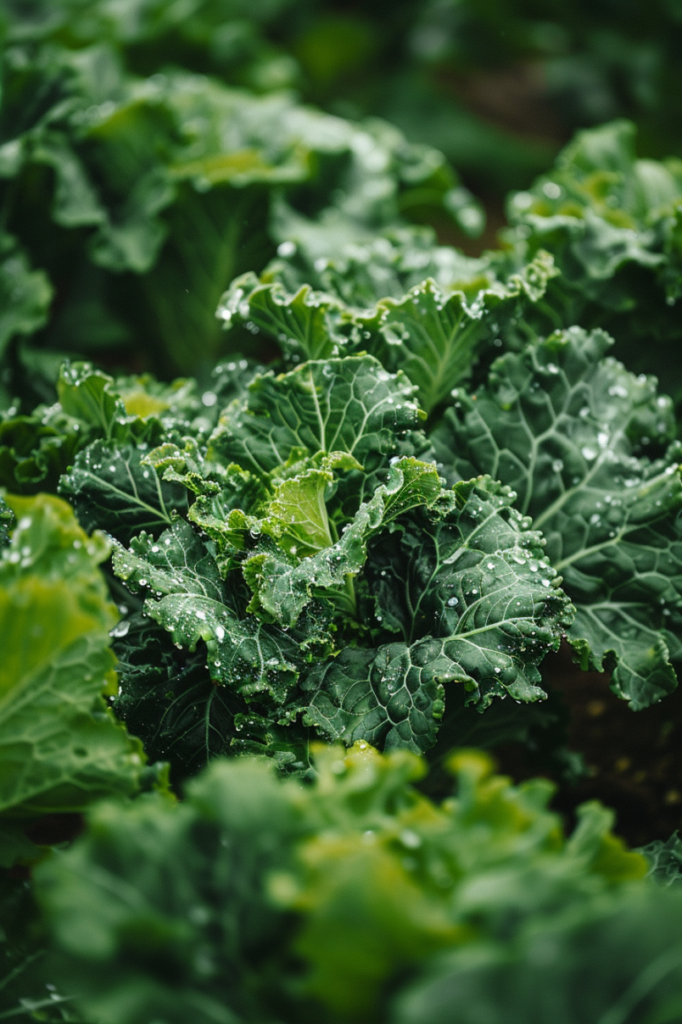
Spinach
Spinach is a leafy green vegetable that, while often grouped with lettuces due to its common use in salads, is actually a member of the amaranth family.
Renowned for its high nutritional value, spinach is packed with vitamins, minerals, and antioxidants.
With its tender, dark green leaves, spinach offers a mild, slightly earthy flavor.
Its versatility shines in both raw and cooked preparations.
In salads, it provides a nutritious base and a tender contrast to crisper greens.
Spinach can also be sautéed, steamed, or added to soups and stews for a boost of nutrients.
Beyond its culinary uses, spinach is a popular ingredient in smoothies and juices due to its high vitamin and mineral content.
Mesclun
Mesclun isn’t a specific type of lettuce but rather a delightful blend of various young, tender salad greens.
This colorful mix originated in Provence, France, and has since gained popularity worldwide.
The word “mesclun” comes from the Provençal word “mesclumo,” meaning “mixture.”
This mix often includes a variety of lettuces and other leafy greens, offering a range of flavors, textures, and color in one bowl.
Mesclun is typically a colorful mix of green, red, and purple leaves offering a diverse range of nutrients from the different leaves included.
The composition of mesclun can vary, but it typically includes a combination of baby lettuces, arugula, spinach, endive, radicchio, and other delicate greens.
Kale
Kale, a leafy green vegetable, has surged in popularity owing to its exceptional nutritional value.
Unlike lettuce, it belongs to the Brassica family, alongside broccoli, cabbage, and Brussels sprouts.
Characterized by its curly, dark green leaves, kale is rich in vitamins, minerals, and antioxidants.
While its slightly bitter flavor may not appeal to everyone at first, its health benefits have made it a favored choice among health-conscious individuals.
In the kitchen, kale proves incredibly versatile.
It can be enjoyed raw in salads, smoothies, or juices, or cooked through methods such as sautéing, steaming, or roasting.
Its robust leaves maintain their texture well during cooking, making it a popular addition to soups, stews, and stir-fries.
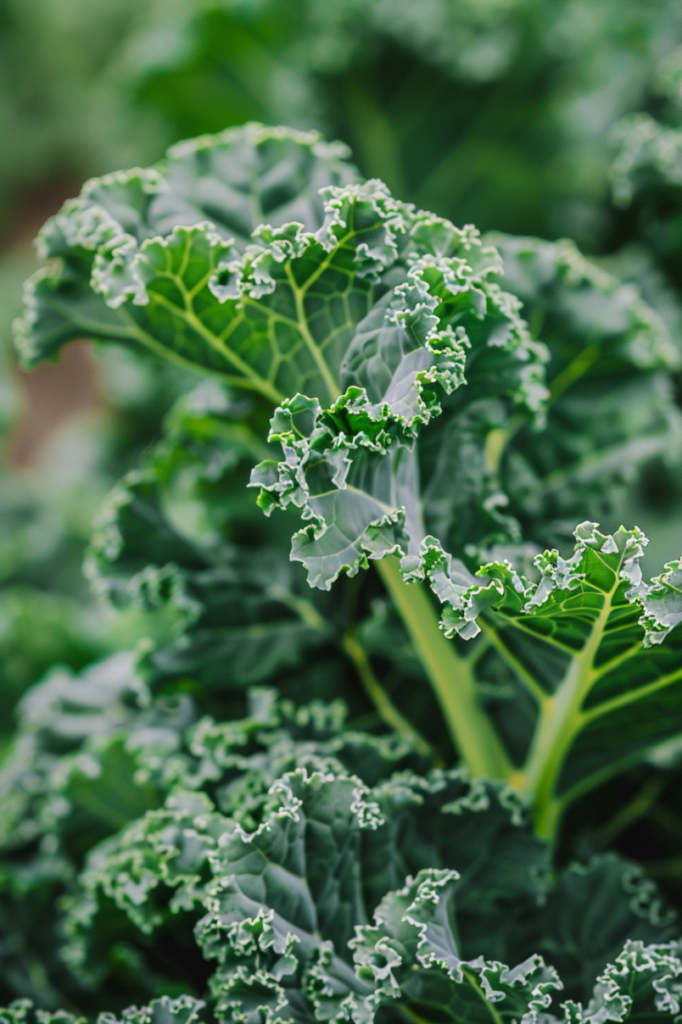
Radicchio
Radicchio is a type of chicory that stands out with its striking appearance and bold flavor.
Its tightly packed, ruffled leaves showcase a vibrant red-purple color with white veins.
This distinctive look makes it a visually appealing addition to any dish.
Beyond its beauty, radicchio offers a unique taste profile. Known for its slightly bitter and pungent flavor, it adds a complex dimension to salads and other dishes.
While the bitterness may be off-putting to some, it can be balanced by sweeter ingredients, creamy dressings, or cooking methods like grilling or roasting.
Endive
Endive is a term that often causes confusion as it encompasses several different leafy green vegetables with varying characteristics.
They all share a slightly bitter taste, which can be more pronounced in some varieties, which is a defining feature of this family.
Endive belongs to the chicory family and can come in various forms, including curly endive (frisée), escarole, and belgian endive.
Curly endive has curly, frizzy leaves, while escarole has a more open, leafy head.
The belgian endive has long, slender, pale yellow to white heads with crisp, tender leaves.
Watercress
Watercress is a type of leafy green vegetable that is known for its semi-aquatic growing nature.
Watercress has small, oval-shaped leaves that grow in clusters.
It is often grown in shallow, running water and prefers cool, moist conditions.
It has a pronounced peppery flavor, similar to arugula, which can be more intense than traditional lettuce.
Escarole
Escarole belongs to the chicory family and is known for its slightly sweet and less bitter flavor compared to other chicories.
Escarole is a type of endive with a distinctive look and taste. It’s often confused with other leafy greens, but it has its own unique characteristics.
Escarole has broad, green leaves with slightly jagged and crumpled edges.
They form a loose rosette, similar to loose-leaf lettuce.
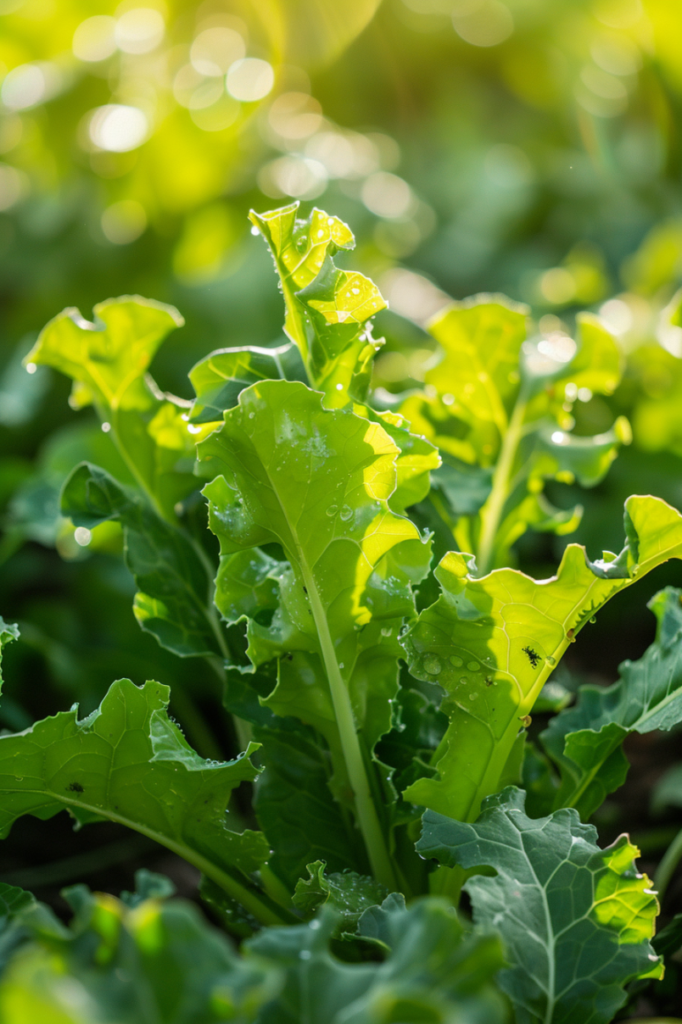
Mache
Mache, also known as lamb’s lettuce or corn salad, is a tender and delicate leafy green with a mild, slightly nutty flavor.
It’s characterized by its small, spoon-shaped leaves that form a rosette.
Mache is often used in mixed green salads, where its mild flavor complements other, stronger greens.
It can also be added to sandwiches, soups, or used as a garnish.
Iceberg lettuce
Iceberg lettuce, also referred to as crisphead lettuce, is renowned for its crunchy texture and mild taste.
It forms a large, round head with tightly packed, pale green leaves.
However, it is considered low in nutritional content compared to other lettuce varieties, as it primarily consists of water and contains relatively few vitamins and minerals.
Despite this, it remains widely used in salads, sandwiches, and as a topping for burgers and tacos, thanks to its refreshing crunch and versatile culinary applications.
Romaine lettuce
Romaine lettuce, also known as cos lettuce, is a popular variety recognized for its tall, upright growth and crisp, dark green leaves.
Unlike many other types of lettuce, it is heat-tolerant, making it a reliable option for salads even in warmer weather.
Its flavor is mildly sweet with a slight bitterness, and the leaves have a satisfying crunch.
These sturdy leaves are ideal for holding up well in dressings, making romaine versatile for various culinary uses.
Commonly used in salads, particularly caesar salads, romaine’s sturdy leaves can handle dressings and other ingredients without wilting, adding both texture and flavor to dishes.
Boston lettuce
Boston lettuce, also called butterhead lettuce, is a favored variety due to its tender, delicate leaves and sweet flavor.
It features a loose, round head with soft, buttery leaves that distinguish it from other lettuce types.
Boston lettuce is perfect for salads, sandwiches, and wraps, and it also works well as a bed for other ingredients.
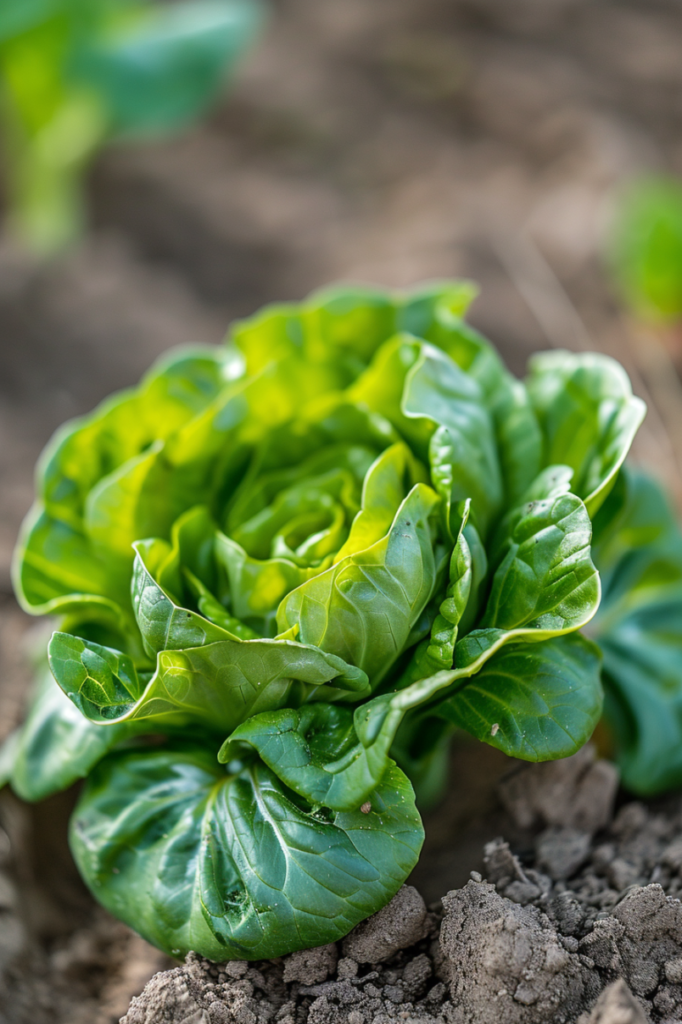
Bibb lettuce
Bibb lettuce is a type of butterhead lettuce known for its small, round head and incredibly tender leaves.
Bibb lettuce is similar to boston lettuce, but smaller in size.
It’s named after John Bibb, a lawyer who cultivated it in Kentucky in the late 1800s.
Ideal for salads, sandwiches, and wraps.
Often used as a bed for other ingredients due to its delicate nature.
Looseleaf lettuce
Looseleaf lettuce is a category that encompasses a variety of lettuce types that don’t form tight heads like romaine or butterhead.
Instead, they produce individual, loosely packed leaves.
Looseleaf lettuce is a great option for those who enjoy a mix of flavors and textures in their salads.
Its versatility makes it a favorite among home gardeners and chefs alike.
Batavia lettuce
Batavia lettuce, also referred to as french crisp or summer crisp lettuce, is highly prized for its crunchy texture and resilience against bolting in warmer climates.
It forms loose, open heads with thick, slightly wavy leaves that can vary in color from light green to shades of red, depending on the specific variety.
Batavia lettuce is widely appreciated for its versatility, commonly featured in salads and cooked dishes alike.
Little gem lettuce
Little Gem lettuce is a type of lettuce that belongs to the butterhead category.
Little Gem lettuce forms small, compact heads with leaves that are creamy white on the inside and green on the outside.
It is often referred to as a “mini romaine” due to its compact size and shape.
Little Gem lettuce has gained popularity among chefs and home cooks alike for its unique combination of taste and texture.
It can be enjoyed raw, grilled, or roasted.
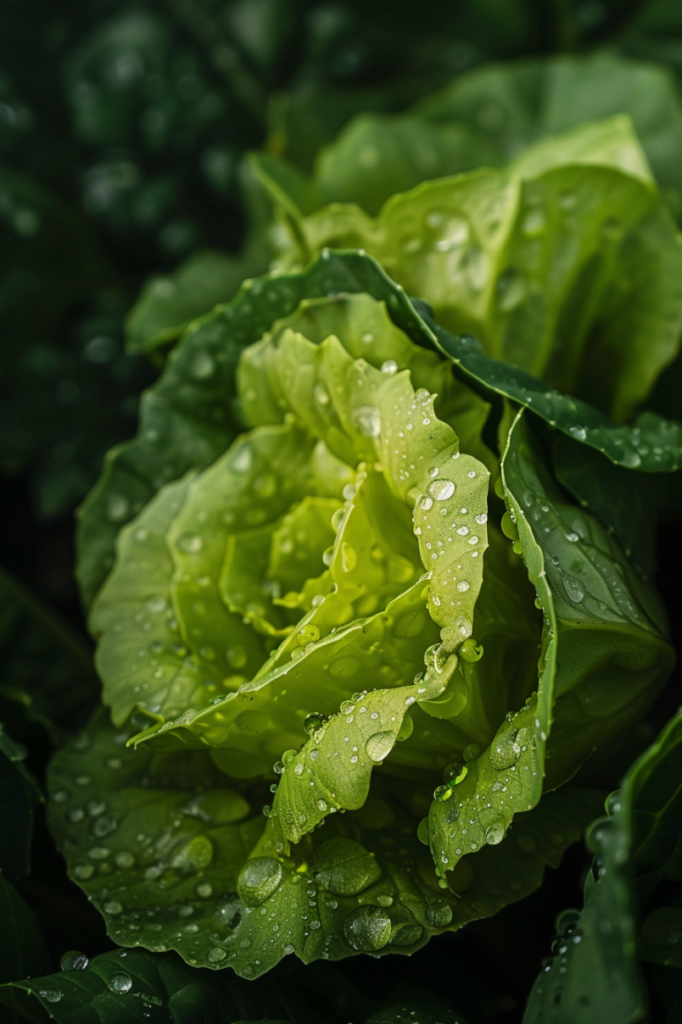
Oak leaf lettuce
Oak leaf lettuce, a member of the loose-leaf lettuce family, forms loose rosettes with deeply lobed leaves resembling oak leaves, available in green or red varieties.
Prized for its delicate texture and subtle sweetness, it is favored by those who value both flavor and aesthetics in their salads.
Its attractive appearance also enhances culinary presentations.
Buttercrunch lettuce
Buttercrunch lettuce offers a delightful balance, combining the crisp texture of crisphead lettuce with the tender qualities of butterhead lettuce.
Its unique blend makes it a favorite for salads and various culinary uses.
The lettuce forms a medium-sized, loosely packed head with thick, buttery outer leaves surrounding a crisp, creamy green core.
Buttercrunch lettuce is known for its resilience to bolting, which makes it well-suited for cultivation in warmer climates.
Little caesar lettuce
Little caesar lettuce is a smaller and more compact version of romaine lettuce, perfectly suited for making a Caesar salad for two.
Its tall and upright head is smaller than traditional romaine, featuring green outer leaves and golden, blanched inner leaves.
Little caesar lettuce offers the classic romaine flavor in a convenient size, making it a popular choice for smaller servings.
Its compact nature also makes it an excellent option for home gardens.
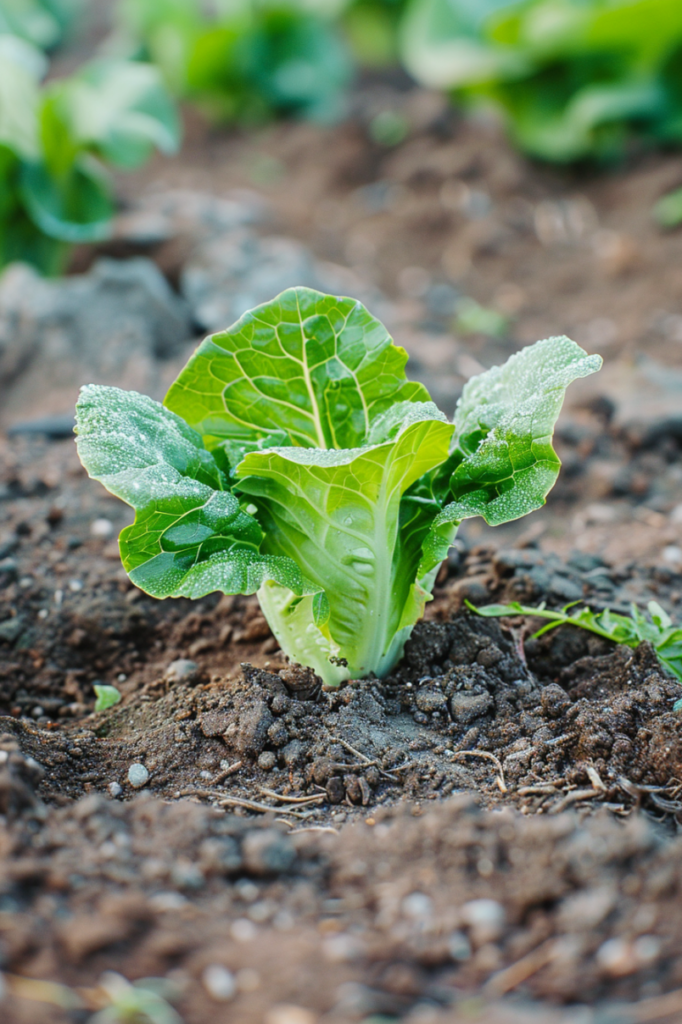
- Read also: Watering Lettuce in Pots: A Simple Guide for Beginners
- Read also: Tips for a Thriving Harvest: Watering Lettuce in the Garden
Conclusion
Lettuce is a versatile vegetable known for enhancing flavor, texture, and nutrition in meals.
Knowing the various types of lettuce helps you select the perfect variety for your cooking and gardening preferences.
Whether you enjoy the crispness of Iceberg, the robustness of Romaine, or the delicacy of Butterhead, there’s a lettuce type suited to every taste and culinary need.
FAQs
Consider the desired flavor, texture, and appearance of your salad. Romaine is crisp and sturdy, butterhead is tender and sweet, and looseleaf offers a variety of flavors and textures.
Butterhead lettuce is generally considered the sweetest type, with varieties like bibb and boston offering a delicate, buttery flavor.
Romaine and little gem are good options for grilling due to their sturdy leaves. They can be grilled whole or in wedges.
Romaine has a long, upright head with crisp, flavorful leaves, while iceberg has a round, tightly packed head with a milder, crunchier texture.



